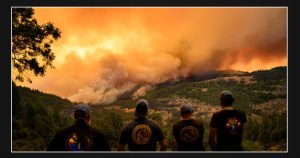California’s national forests, with their majestic landscapes and diverse geology, are a treasure trove for rock enthusiasts. From glittering gemstones to fascinating fossils, these public lands offer a chance to connect with the Earth’s history through the beauty of its rocks and minerals. But before you head out with your hammer and bag, it’s crucial to understand the legalities and responsible practices surrounding rock collecting, also known as rockhounding, in California’s national forests.
The Green Light: Rockhounding for Personal Enjoyment
The good news is that the U.S. Forest Service, the federal agency managing national forests, generally allows rockhounding for personal, non-commercial use. This means collecting small quantities of rocks, minerals, and even some semi-precious stones for your own enjoyment, education, or crafting projects is permitted in most areas.
There are, however, some key guidelines to keep in mind:
- Quantity Matters: “Reasonable amounts” is the guiding principle. The Forest Service often defines this as up to 10 pounds of rocks per person, per day.
- Location, Location, Location: Not all areas within a national forest are open for rockhounding. Certain designated regions, like wilderness areas or areas with specific resource protection measures, may have restrictions on collecting.
- Forbidden Finds: Be aware that some items are strictly off-limits for collection. This includes prehistoric or historic artifacts, petrified wood exceeding specified limits (usually 25 pounds per day), and meteorites, which are considered objects of scientific interest.
Permits and Regulations: When the Hobby Gets Serious
If your rockhounding ambitions extend beyond personal use and veer towards commercial purposes, such as selling your finds, you’ll need to obtain a permit from the Forest Service. This applies even if you plan to collect larger quantities for non-commercial use, like supplying a classroom or club. The permitting process involves submitting a detailed plan outlining your collecting activities, potential environmental impact, and measures to mitigate it.
Here are some resources to help you navigate the permitting process and regulations specific to California’s national forests:
The U.S. Forest Service Website: The official Forest Service website offers a wealth of information on rockhounding regulations in different regions. Look for the specific national forest you plan to visit and consult their recreation section for any specific rules or limitations. https://www.fs.usda.gov/detail/r3/recreation/regulations/?cid=fsbdev3_022266
Local Ranger District Offices: Getting in touch with the ranger district office managing the national forest you’re interested in is the best way to obtain the most up-to-date information on permitted collecting areas and any specific restrictions that may be in place.
What Type of Rock Collecting is Allowed on National Forest Land?
- Collection Limits: You can collect small amounts of common rocks, minerals, and even semi-precious stones for personal, non-commercial use. Think common quartz crystals, agate, or obsidian.
- Hobby Activities: Recreational activities like gold panning or using metal detectors to find gold nuggets and other natural metals are permitted.
Which Areas are Closed to Collecting for Recreation?
Not all areas within a national forest are open for rockhounding. Here’s what to keep in mind:
- Special Designations: Wilderness areas or areas with specific resource protection plans might have restrictions on collecting.
- Local Regulations: Always check with the local ranger district office for specific regulations and permitted collecting zones.
- Mining Claims: Consult the Bureau of Land Management (BLM) to see if there are existing mining claims in the area you want to explore.
No Permit Required if the Following Applies:
The good news is that for casual rock collecting, you typically don’t need a permit if:
- Surface Collection: You’re collecting rocks on the surface and not digging with tools or using mechanized equipment.
- Personal Use: You’re collecting for your own enjoyment or educational purposes, not for selling or trading.
By following these guidelines, you can enjoy the exciting world of rock collecting while ensuring the beauty and resources of California’s national forests are preserved for future generations.



